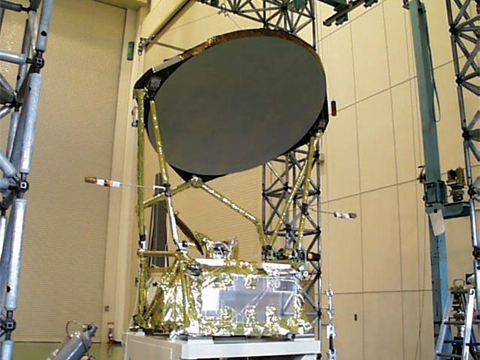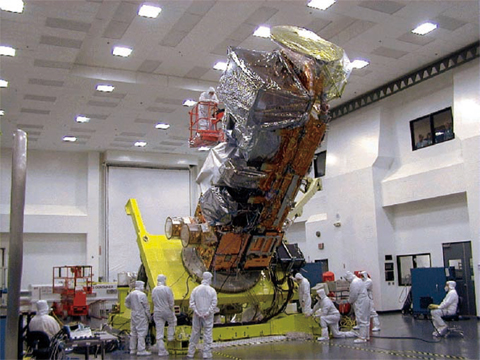
Fig. 1.2.1 Photograph of AMSR-E |
The Japan Aerospace Exploration Agency (JAXA) has conducted research and development of microwave scanning radiometers since the 1970s. The first satellite-mounted sensor was the Microwave Scanning Radiometer (MSR), which was installed on the Marine Observation Satellite launched in 1987. The functions of the sensor were confirmed by obtaining data from around Japan. In succession, high-performance microwave scanning radiometers (Advanced MSR; AMSR) were developed and two AMSRs completed. One is AMSR-E, which was installed on Aqua, a NASA satellite launched in May 2002, and the other is AMSR, which was installed on ADEOS-II, a JAXA satellite launched in December 2002. Photographs in Fig. 1.2.1 and Fig. 1.2.2 depict AMSR-E and the satellite bus testing site for Aqua.

Fig. 1.2.2 AMSR-E is attached on Aqua' s head. |
Unfortunately, AMSR shut down in October 2003 when ADEOS-II stopped operation due to a failure in the cable connecting the solar panel to the satellite body. However, AMSR-E on Aqua continues observation and future data are expected.